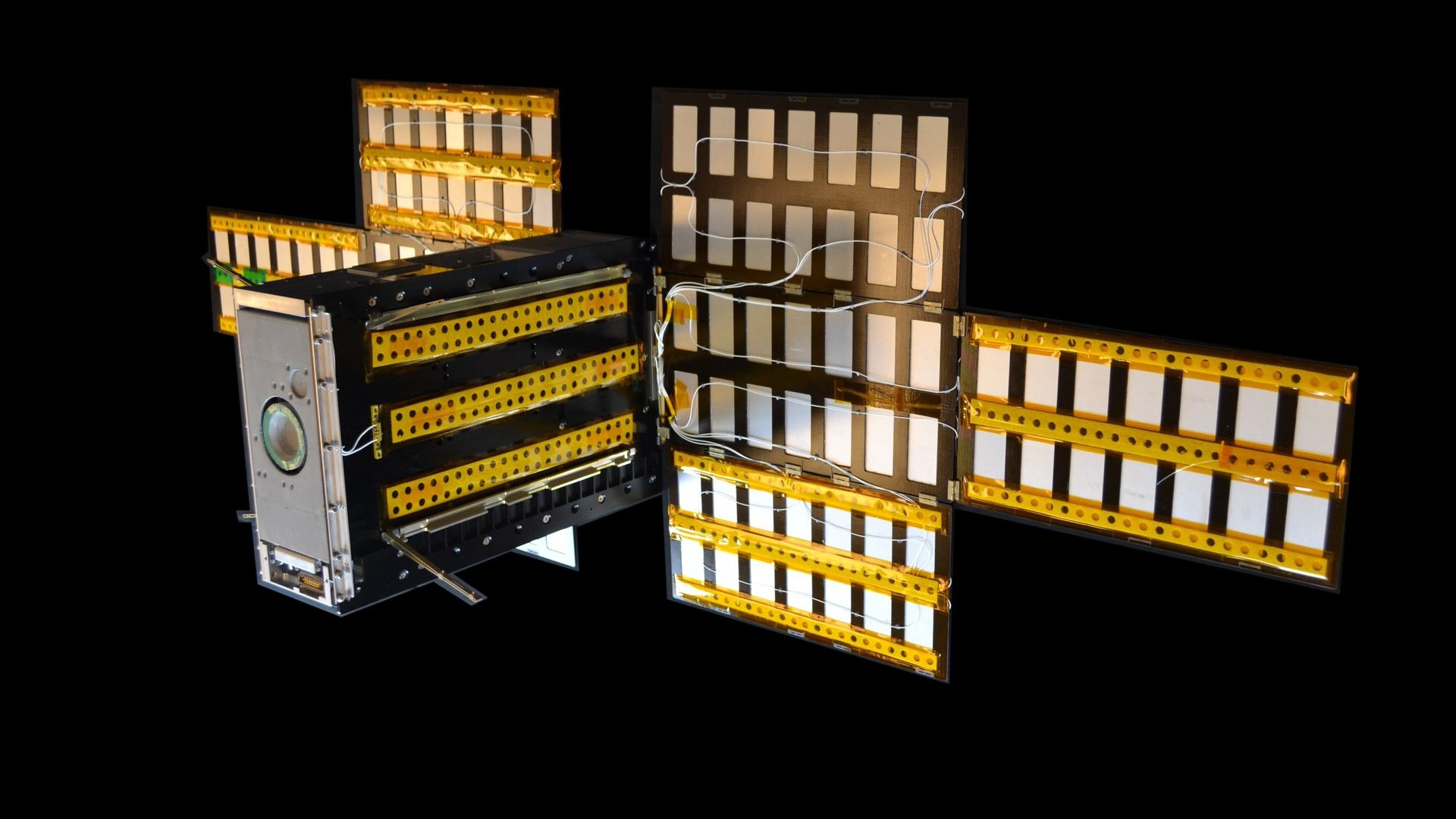Artemis 1 cubesat finishes mission after detecting water and ice on the moon
Small missions are risky, but 'designed to test the bounds of what can be achieved', a NASA official said.

The mission of an ice-hunting cubesat is officially at an end.
NASA officials announced Thursday (Aug. 3) that the agency had ceased operations earlier this year on its Artemis 1 moon mission ride-along cubesat, called LunaH-Map.
These types of small satellites "are inherently risky, as they are designed to test the bounds of what can be achieved with lower-cost missions," Lori Glaze, director of NASA's planetary science division, said in an agency statement.
Operations ceased in May, as NASA previously predicted, due to a stuck valve in the cubesat's propulsion system that stranded the little satellite in the wrong orbit. NASA officials made no official declaration of mission's end until Aug. 3, however.
Related: The 10 greatest images from NASA's Artemis 1 moon mission
The statement emphasized that LunaH-Map, although it missed mapping the south pole of the moon, did achieve one of its main mission objectives. The mission was led by Craig Hardgrove at Arizona State University, and showed great performance on its main instrument.
The cubesat's neutron spectrometer "can detect water and ice at the lunar surface," the statement said. The data will continue to be parsed and the design of the cubesat will inform future missions, agency officials added.
Get the Space.com Newsletter
Breaking space news, the latest updates on rocket launches, skywatching events and more!
Mission science will also live on, Hardgrove stated. "We've said goodbye to our little spacecraft, but this is not the last you'll be hearing about it," Hardgrove wrote on Twitter. "Plenty of papers and presentations are in the pipeline this year and next about the technology & science."
A version of the spacecraft's spectrometer will fly on another NASA mission, called Lunar-VISE or Lunar Vulkan Imaging and Spectroscopy Explorer. It's part of a payload that will fly to the moon's surface on a future mission under NASA's Commercial Lunar Payload Services program that funds private landers, rovers and science on the surface.
LunaH-Map was part of a cluster of cubesats launching with Artemis 1 in November 2022. While many of them went on to complete their major objectives, other ones also struggled. For example, Japan's Omotenashi spacecraft could not drop a tiny lander on the moon due to a communications issue. And NEA Scout remained silent after launch, leaving it unable to solar sail over to a near-Earth asteroid.
The larger Artemis 1 mission met all its major goals, including flying an Orion spacecraft around the moon and sending it safely to Earth. NASA is hard at work on the second mission of the series, Artemis 2, now expected to launch four astronauts around the moon no sooner than 2024. Artemis 3, a moon-landing mission, may follow in 2025 or 2026 if all keeps to schedule.
Join our Space Forums to keep talking space on the latest missions, night sky and more! And if you have a news tip, correction or comment, let us know at: community@space.com.

Elizabeth Howell (she/her), Ph.D., was a staff writer in the spaceflight channel between 2022 and 2024 specializing in Canadian space news. She was contributing writer for Space.com for 10 years from 2012 to 2024. Elizabeth's reporting includes multiple exclusives with the White House, leading world coverage about a lost-and-found space tomato on the International Space Station, witnessing five human spaceflight launches on two continents, flying parabolic, working inside a spacesuit, and participating in a simulated Mars mission. Her latest book, "Why Am I Taller?" (ECW Press, 2022) is co-written with astronaut Dave Williams.









